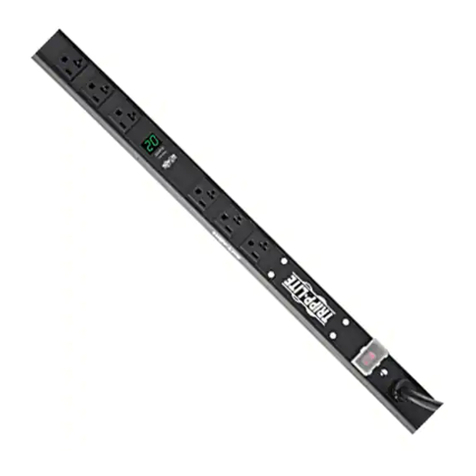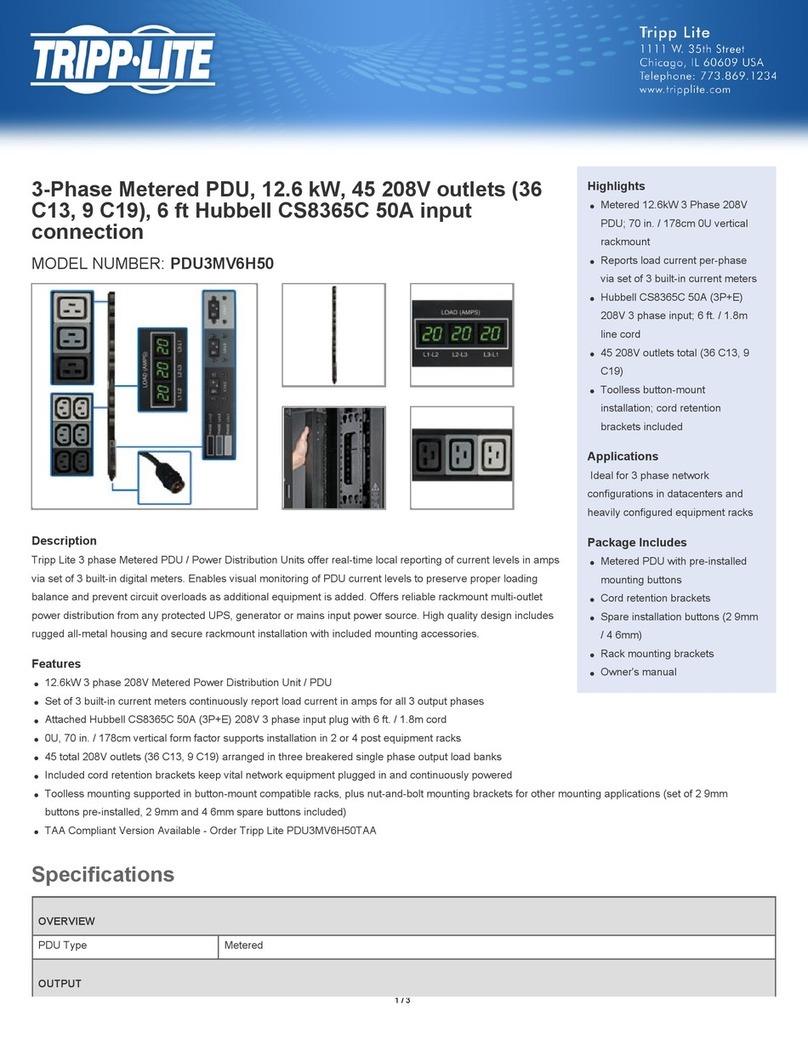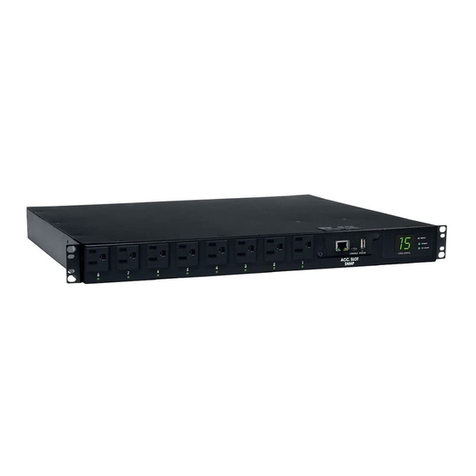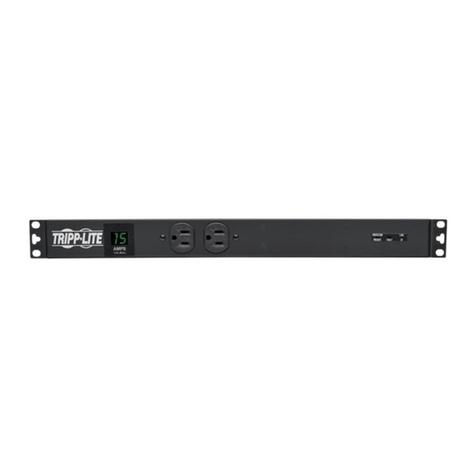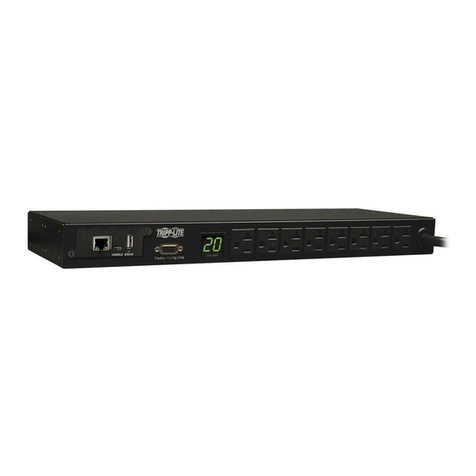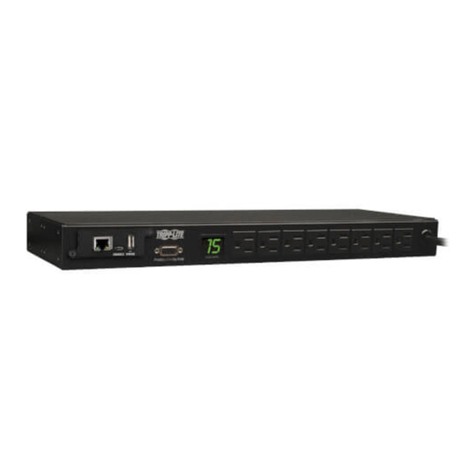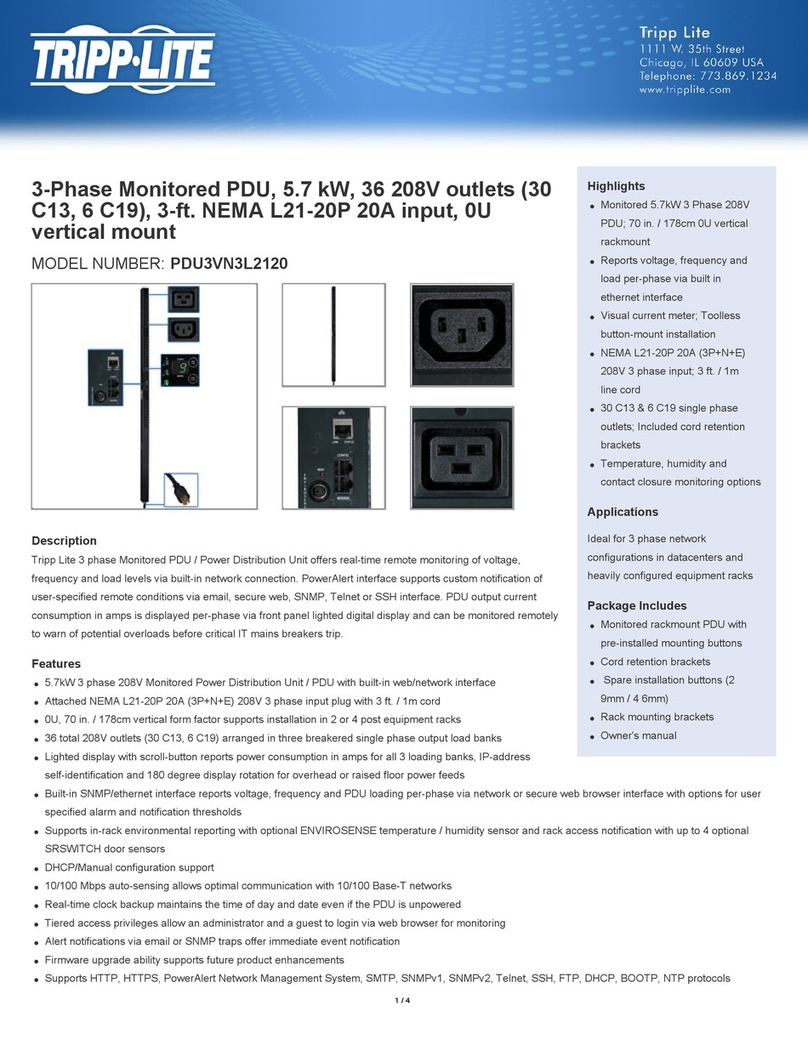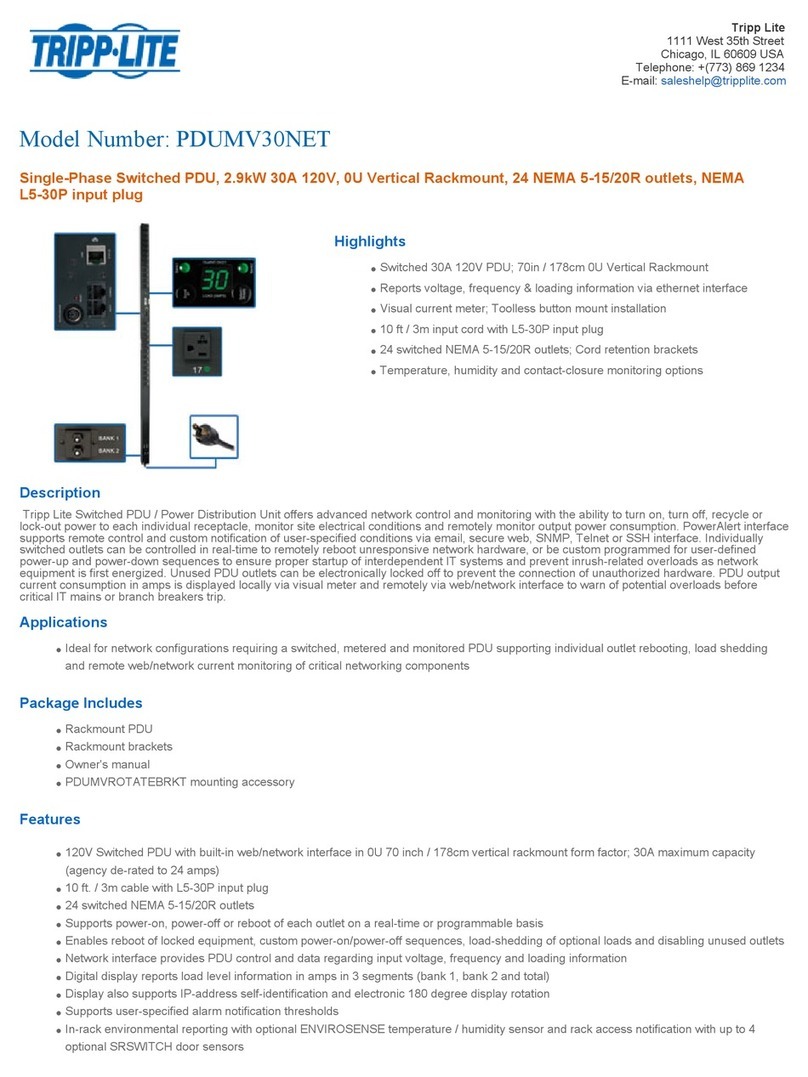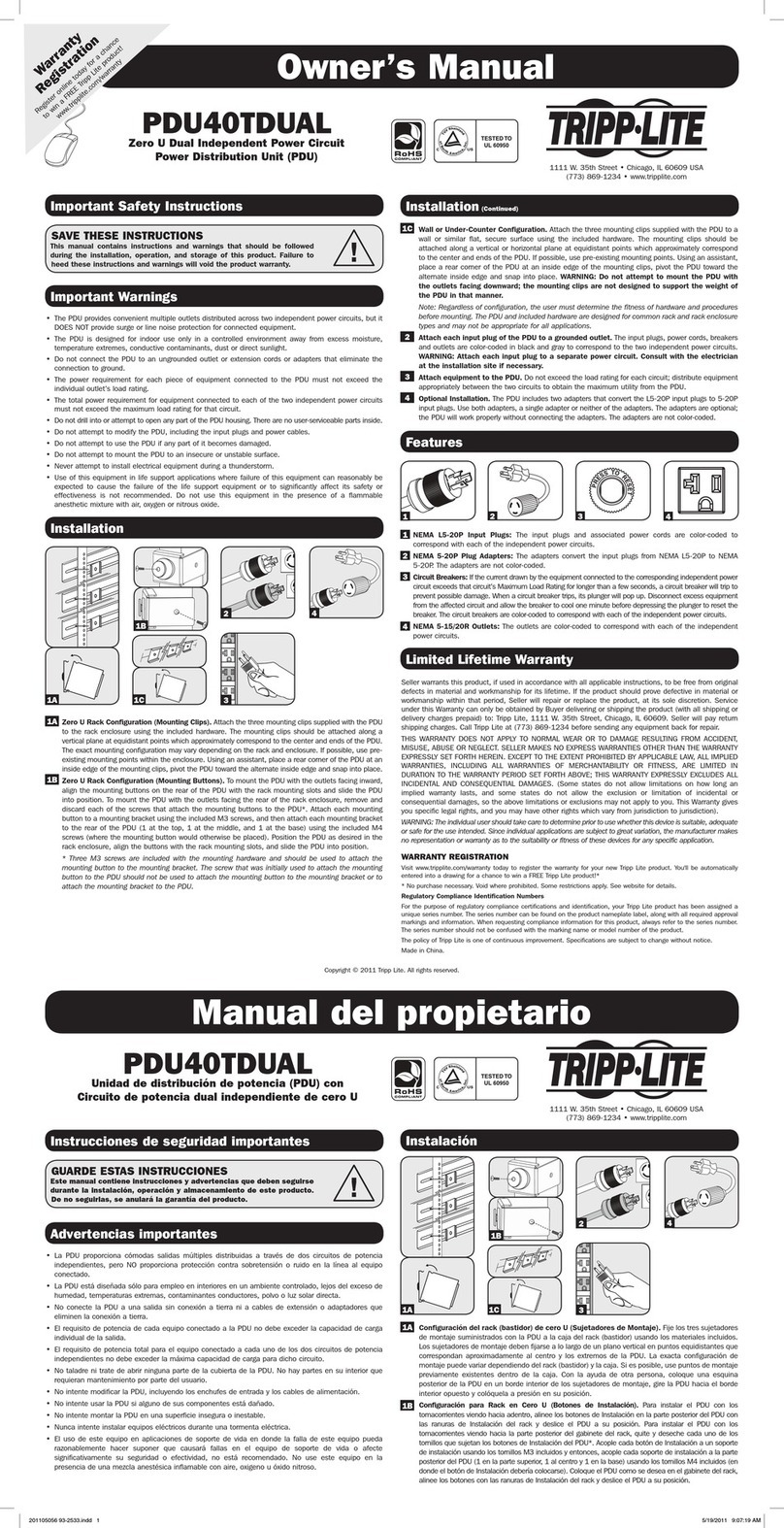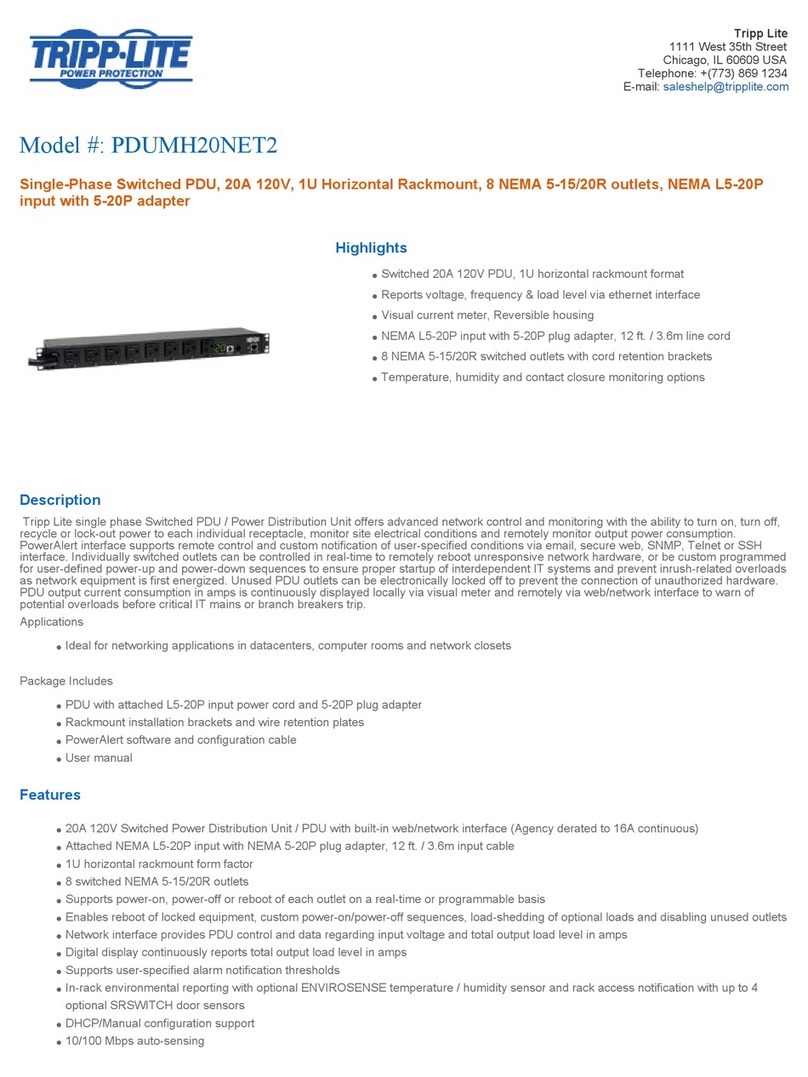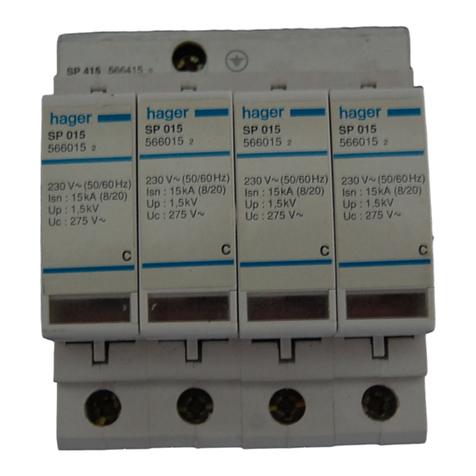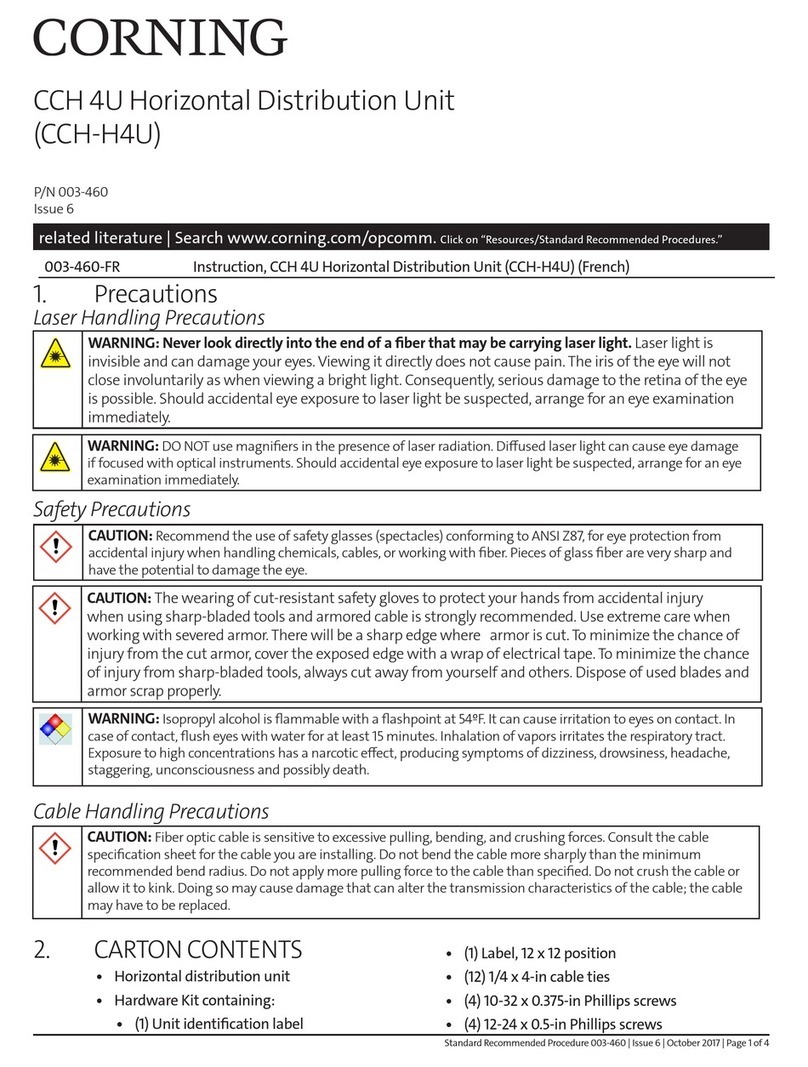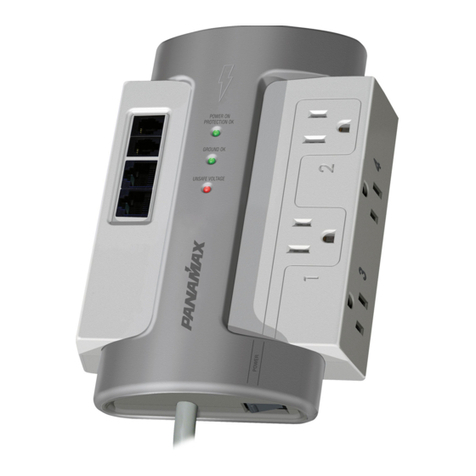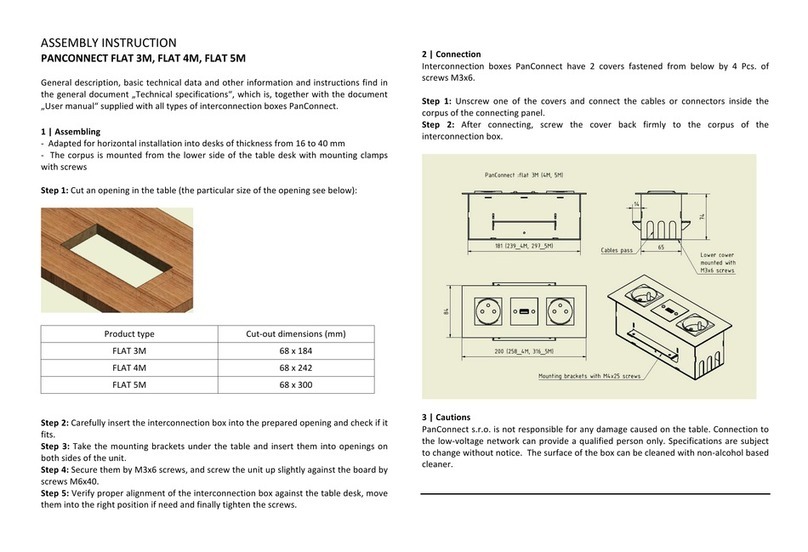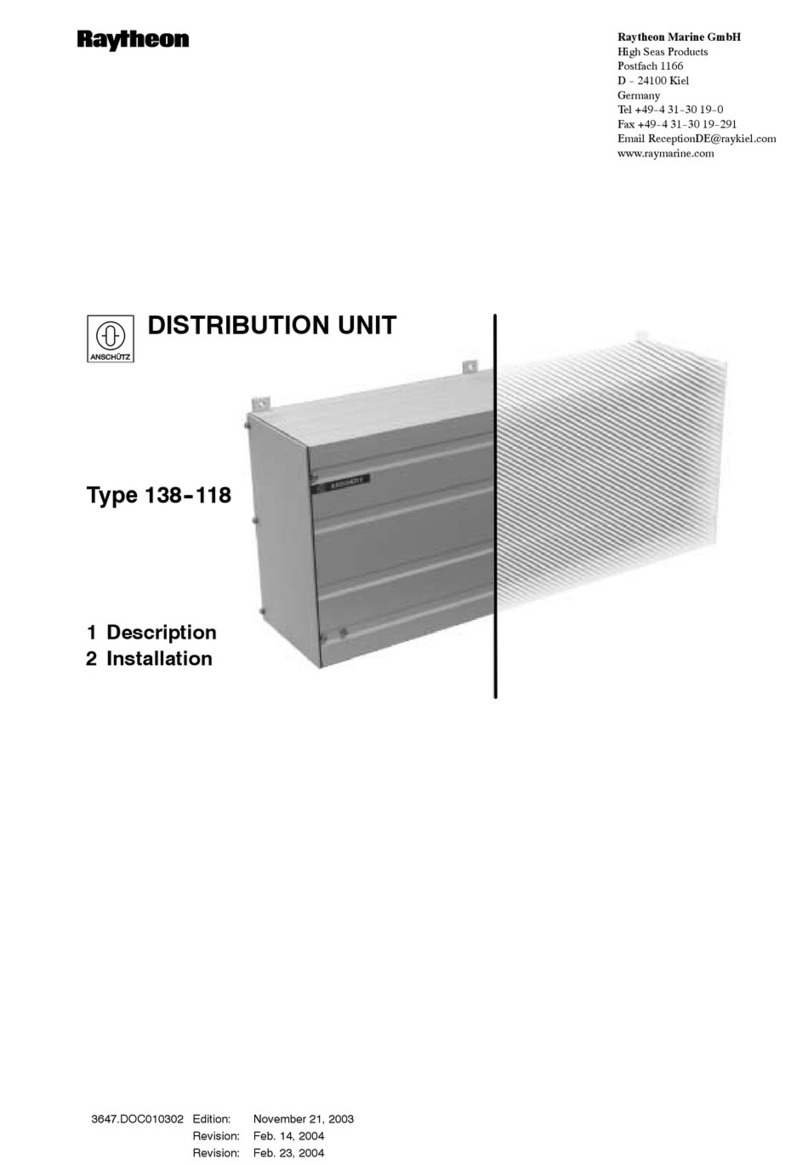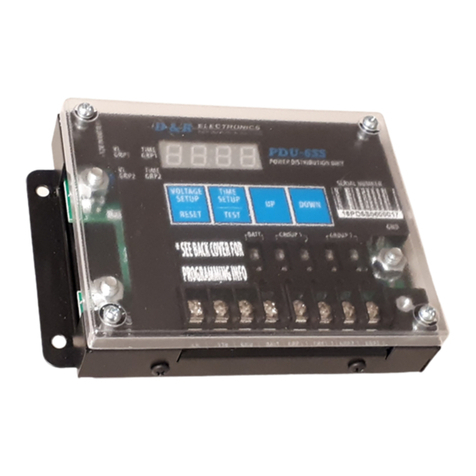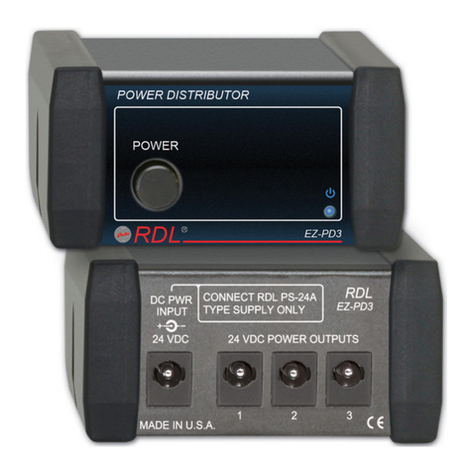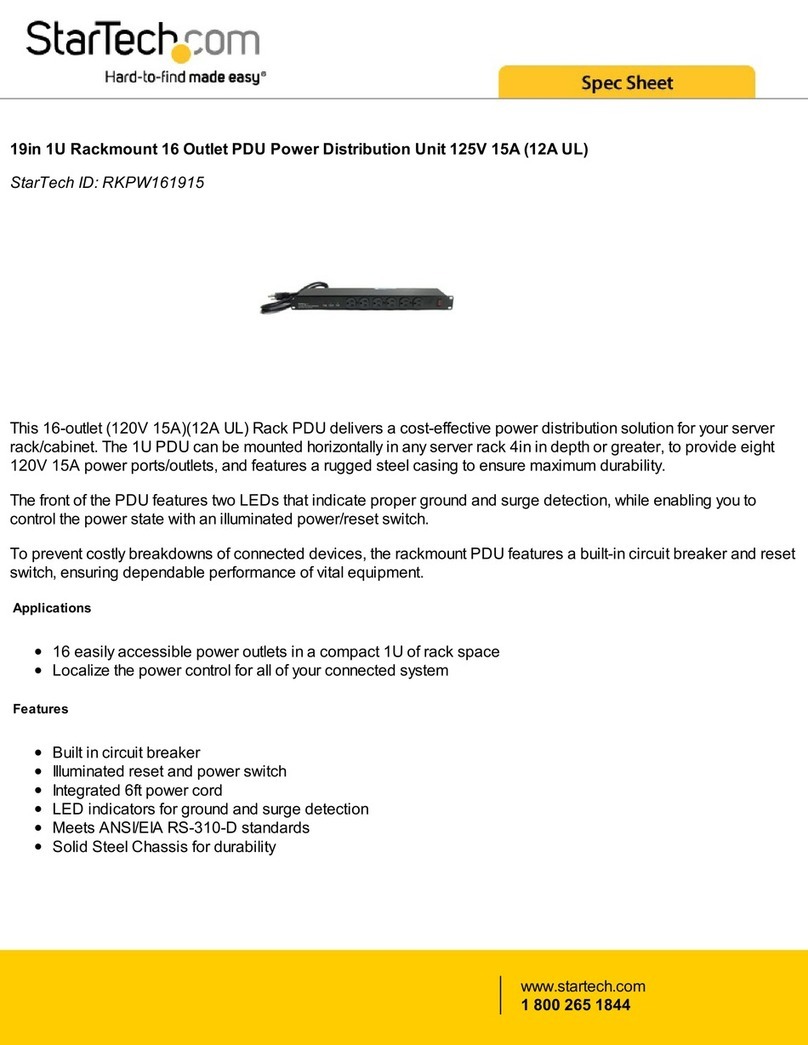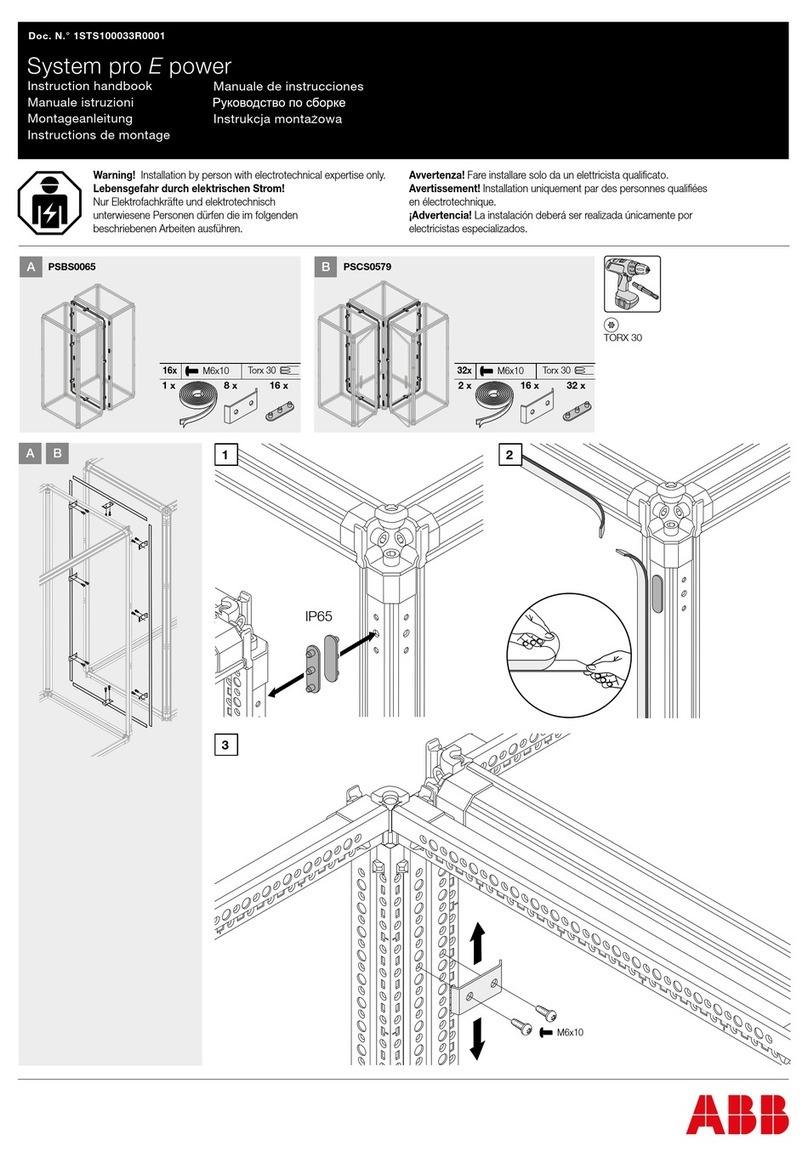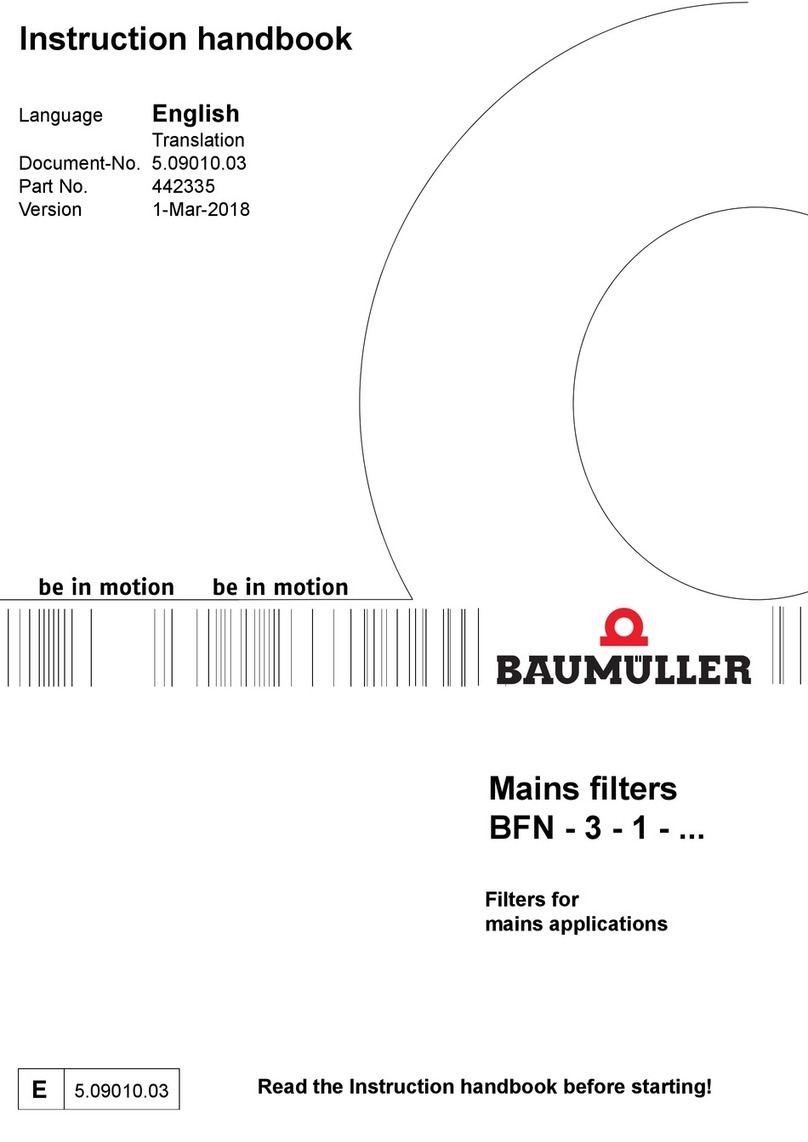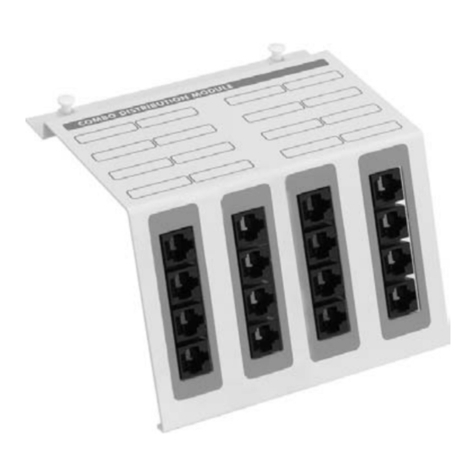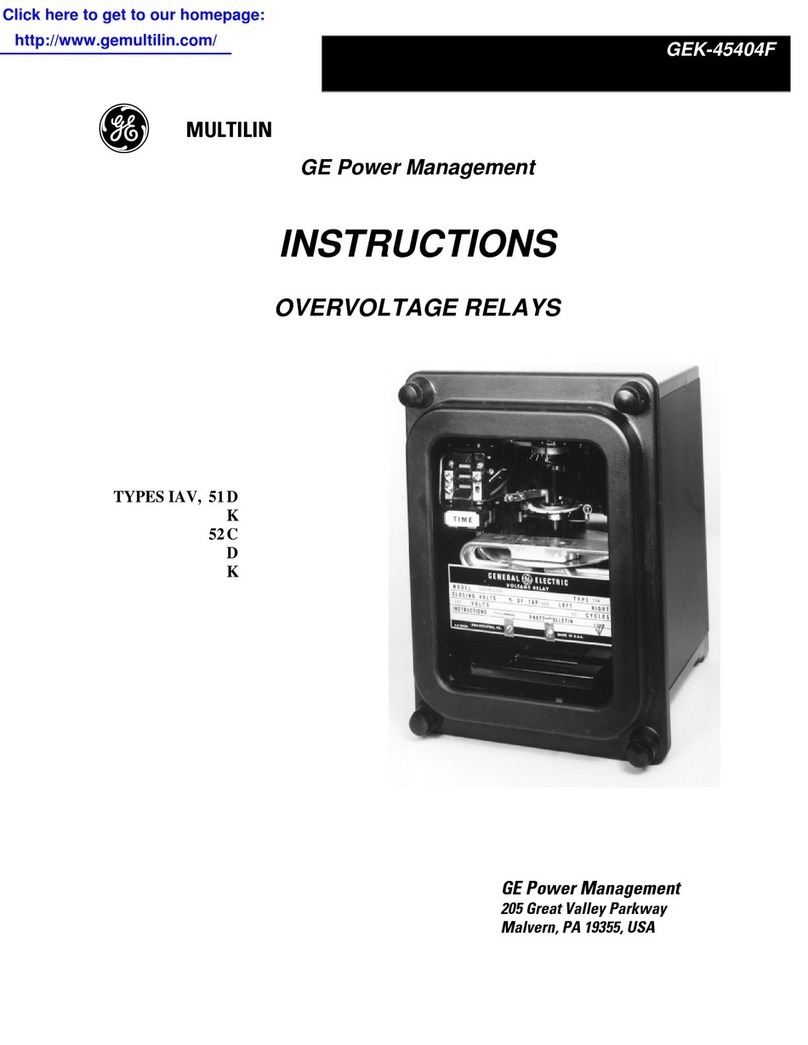1 Primary Input
Model PDUMH15AT/15ATNET: The cord is permanently attached to the PDU and has a
NEMA 5-15P plug.
Model PDUMH20AT/20ATNET: The cord is permanently attached to the PDU and has a
NEMA L5-20P plug.
Model PDUMH20HVATNET: The C19-C20 cord is detachable.
2 Secondary Input Inlet (detachable on all models)
Model PDUMH15AT/15ATNET: The IEC-320-C14 inlet connects to the detachable Secondary
AC Input Power Cord.
Model PDUMH20AT/20ATNET/20HVAT/20HVATNET: The IEC-320-C20 inlet connects to the
detachable Secondary AC Input Power Cord.
3 Switched Outlets: During normal operation, the outlets distribute AC power to connected equipment.
On Models PDUMH15ATNET, PDUMH20ATNET and PDUMH20HVATNET, the NEMA 5-15R,
NEMA 5-15/20R and IEC-320-C13 outlets may be switched On and Off via software control. When
an outlet is live, the associated LED illuminates.
4 Unswitched Outlets (PDUMH20HVAT & PDUMH20HVATNET only): These outlets receive
power from either input source, but are not individually switchable.
5 Card Location (Network Jack on NET Models only / Protective Plate on PDUMH15 and
PDUMH20): An optional SNMP card (SNMPWEBCARD) may be purchased and installed in the
slot, allowing the PDU to be configured, controlled and monitored remotely. Contact Tripp Lite
Customer Support at 773.869.1234 for more information.
6 Factory Port: The port is reserved for configuration by factory authorized personnel only. Do not
connect anything to the port.
7 Digital Load Meter (Ammeter): The total electrical current used by the connected equipment is
displayed on the digital meter in amperes.
Input Voltage Range Select Switch (Model PDUMH20HVATNET): The switch to the lower left of
the display may be used to toggle between “HI” or “LO” voltage ranges. The display will indicate
“HI” or “LO” for five seconds. Press the switch once to display ranges, press again within five
seconds to change setting. Setting can also be changed via PowerAlert. (PDUMH20HVATNET only.)
IP Address Display (Models PDUMH20HVAT & PDUMH20HVATNET): Press and hold the
switch to display the IP address of the SNMP card in the PDU.
8 Network Interface (PDUMH15ATNET, PDUMH20ATNET, PDUMH20HVATNET only): Use
this RJ-45 jack to connect the PDU to the network with a standard Ethernet patch cable. The Link
LED A and Status LED B indicate several operating conditions, as shown in the table below. This
port is not compatible with PoE (Power Over Ethernet) applications.
Network Operating Conditions
ALink LED Color BStatus LED Color
Off No Network Connection Off Card Not Initialized
Flashing Amber 100 Mbps Network Connection Steady Green Card Initialized and Operational
Flashing Green 10 Mbps Network Connection Flashing Amber Error - Card Not Initialized
9 ENVIROSENSE Port: Use this port to connect a Tripp Lite ENVIROSENSE environmental sensor
to provide remote temperature/humidity monitoring and a dry contact interface to control and
monitor alarm, security and telecom devices. Contact Tripp Lite Customer Support at 773.869.1234
for ordering information. Note: Do not connect a keyboard or mouse to this port.
10 Configuration Port: Use this port to provide a direct terminal connection to a computer with a
terminal emulation program. A serial cable (part number 73-1025) is included with the PDU. If you
need to order a replacement cable, contact Tripp Lite Customer Support at 773.869.1234.
11 Input Source Indicator: When the PDU is connected to a live AC power source, the Primary or
Secondary input LED illuminates to indicate which source is supplying power to the PDU outlets.
3. Features (continued)
